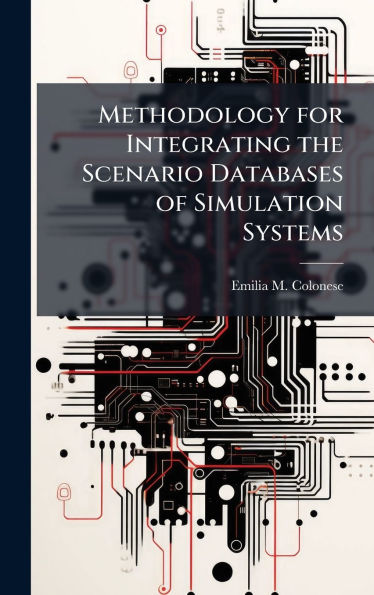The use of many different simulation systems by the United States Department of Defense has resulted in many different scenario data representations contained in heterogeneous databases. These heterogeneous databases all represent the same data concept, but have different semantics due to intrinsic variations among the data models. In this research, I describe a unified scenario database to allow interoperability and reuse of the scenario data components while avoiding the problems of data redundancy. Using the object-oriented approach, the data and schema of the scenario databases, represented in an object-oriented model, are integrated into a global database also represented in an object-oriented model. The global database schema is extended to allow semantic interoperability of database components by explicitly associating the semantics of the schema elements of the database components with the global metadata. I create the Integration Dictionary to represent the semantic interoperability and to store the translation mappings between each database component and the global database. The Integration Dictionary also provides support for object-oriented views generation. Next, I describe a methodology to integrate databases using the Integration Dictionary. My methodology is based on an analysis of the semantics of conceptual schema elements and on the identification of related elements in the global schema.
This work has been selected by scholars as being culturally important, and is part of the knowledge base of civilization as we know it. This work was reproduced from the original artifact, and remains as true to the original work as possible. Therefore, you will see the original copyright references, library stamps (as most of these works have been housed in our most important libraries around the world), and other notations in the work.
This work is in the public domain in the United States of America, and possibly other nations. Within the United States, you may freely copy and distribute this work, as no entity (individual or corporate) has a copyright on the body of the work.
As a reproduction of a historical artifact, this work may contain missing or blurred pages, poor pictures, errant marks, etc. Scholars believe, and we concur, that this work is important enough to be preserved, reproduced, and made generally available to the public. We appreciate your support of the preservation process, and thank you for being an important part of keeping this knowledge alive and relevant.
The use of many different simulation systems by the United States Department of Defense has resulted in many different scenario data representations contained in heterogeneous databases. These heterogeneous databases all represent the same data concept, but have different semantics due to intrinsic variations among the data models. In this research, I describe a unified scenario database to allow interoperability and reuse of the scenario data components while avoiding the problems of data redundancy. Using the object-oriented approach, the data and schema of the scenario databases, represented in an object-oriented model, are integrated into a global database also represented in an object-oriented model. The global database schema is extended to allow semantic interoperability of database components by explicitly associating the semantics of the schema elements of the database components with the global metadata. I create the Integration Dictionary to represent the semantic interoperability and to store the translation mappings between each database component and the global database. The Integration Dictionary also provides support for object-oriented views generation. Next, I describe a methodology to integrate databases using the Integration Dictionary. My methodology is based on an analysis of the semantics of conceptual schema elements and on the identification of related elements in the global schema.
This work has been selected by scholars as being culturally important, and is part of the knowledge base of civilization as we know it. This work was reproduced from the original artifact, and remains as true to the original work as possible. Therefore, you will see the original copyright references, library stamps (as most of these works have been housed in our most important libraries around the world), and other notations in the work.
This work is in the public domain in the United States of America, and possibly other nations. Within the United States, you may freely copy and distribute this work, as no entity (individual or corporate) has a copyright on the body of the work.
As a reproduction of a historical artifact, this work may contain missing or blurred pages, poor pictures, errant marks, etc. Scholars believe, and we concur, that this work is important enough to be preserved, reproduced, and made generally available to the public. We appreciate your support of the preservation process, and thank you for being an important part of keeping this knowledge alive and relevant.

Methodology for Integrating the Scenario Databases of Simulation Systems
178
Methodology for Integrating the Scenario Databases of Simulation Systems
178
Product Details
| ISBN-13: | 9781025109701 |
|---|---|
| Publisher: | Hutson Street Press |
| Publication date: | 05/22/2025 |
| Pages: | 178 |
| Product dimensions: | 6.14(w) x 9.21(h) x 0.44(d) |
